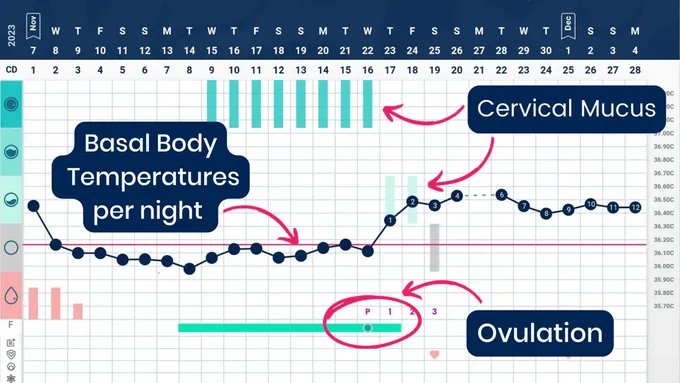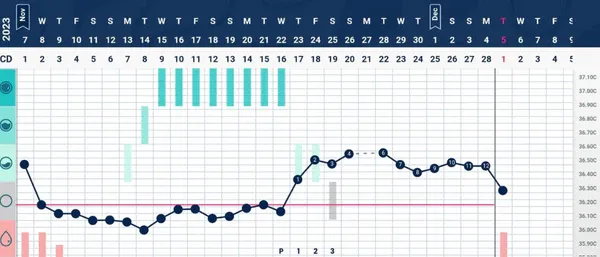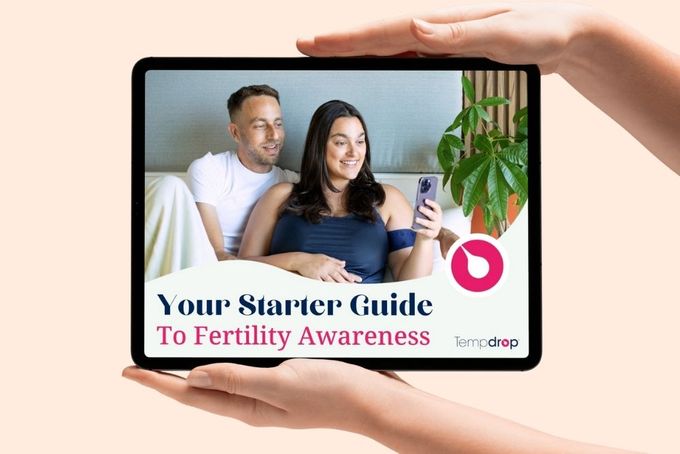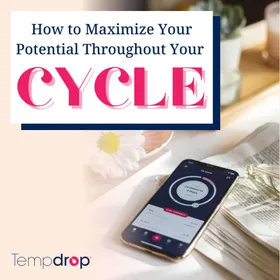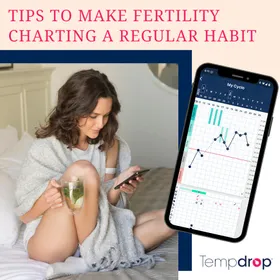Identifying Ovulation With BBT Charting
Updated March 12, 2025.

For most women, the most obvious part of the menstrual cycle is its namesake: menstruation! But here at Tempdrop, we're all about understanding the whole cycle, your body's natural rhythm, and everything involved with those! While most people understand there are a few main parts of the cycle - I would guess a majority of adult women know at about both menstruation and ovulation at a minimum - there's actually an entire rotation and cascade of hormonal events going on between periods! It all hinges on one big thing: ovulation.
Important note: This blog post is just an overview of of basal body temperature (BBT) shifts. Please consult an instructor and/or learn a method completely to understand how to identify ovulation confidently.
Each and every day, our bodies are giving us important messages about our cycle and our health, and it's up to us to pay attention and listen! By charting your cycle, you learn to listen to your body and interpret its messages and signals. This ultimately helps you to live in sync with your body, rather than fighting against its flow.
How to Chart Your Cycle
There are plenty of different methods with which you can accurately track your cycle. You can check out this article for a more in-depth run down, but here's a quick summary of general methods accepted as reliable overall:
- Symptothermal. Symptothermal are some of the most popular methods out there, and largely because they're relatively easy to learn! The first aspect is symptoms (the sympto part of the word), which typically includes cervical mucus at a minimum. The second part is basal body temperature (the thermal part of the word), which changes after ovulation, helping you positively confirm ovulation.
- Cervical Mucus Only. Cervical mucus-only methods are just that - you track only your cervical mucus. These methods typically determine whether you are fertile vs infertile rather than positively confirming ovulation.
- Hormonal. Hormonal methods are incredibly easy as they use other technologies, but that also makes them more expensive. These methods typically use at-home urine tests and have specific protocols on how to interpret them. They tend to be less effective as there's a larger margin of error in interpretation, and test sensitivity factors in as well.
All of these methods have a number of different tools you can use in order to track your cycles. Some help us understand impending ovulation, while others help us confirm ovulation has already happened.
Before choosing a method that works for you, it's important that you define what are you using charting for. If you are using charting for any intention of family planning, it's important to understand both the signs that open your fertile window and the signs that close your fertile window. Then, depending on your intentions, you use that knowledge to either avoid or achieve pregnancy. But there's also the option to use charting to track your health or sync your life with your cycle, without any family planning intention - that's okay too, and generally allows for much looser charting!
Basal Body Temperature
What is basal body temperature (BBT)? Your basal body temperature is the measurement of your body’s lowest resting temperature. For some people, it's easier to remember it as a baseline (using the same root as basal) temperature for your body. Men generally have a relatively stable BBT, but women's bodies are more cyclical so there are changes in it throughout the cycle. This is typically an observable rise of about 0.1°C/0.2°F from before ovulation to after ovulation. And you can identify this rise if you're measuring your basal body temperature every day.
In order to get as accurate as possible temps using a basal body thermometer, you will need to take your temperature daily at the same time each morning, before getting out of bed.
Alternatively, you can use Tempdrop, which is an overnight wearable basal body thermometer. You don't have to wake up, or worry about a lot of the normal disturbances like waking up during the night or length of sleep! It's as simple as putting it on before you go to bed, turning it on (this doesn't emit Bluetooth, just records data), and then syncing it in the morning when you get up - or at your convenience!
BBT Charting
Sample chart: Temperature readings throughout a cycle showing a clear shift following Sensiplan rules from lower temperatures pre-ovulation to higher temperatures post-ovulation.
Choosing a set of rules to follow for BBT charting is important to be able to identify a temperature shift and ovulation.
Once ovulation occurs, your temperature will rise shortly thereafter (usually within 1 to 3 days). In order to confirm ovulation, you will need to wait for at least 3 consecutive days of readings indicating a rise in your temperature, depending on your temperatures and method.
There are two main methods of marking a temperature shifts:
- Taking Charge of Your Fertility by Toni Weschler
- Sensiplan method of symptothermal fertility awareness, (published in English by Reply Obgyn)
The best way to learn these rules is by picking up the manuals or finding an instructor! There are also plenty of self-guided courses to choose from to learn, including Tempdrop's free guide and the follow-up course available for purchase.
Fertility Awareness Methods
Fertility awareness methods for observing ovulation require using at least one - but often two or more - biological indicators to identify ovulation. There are many options, and it really depends on the method of fertility awareness that you choose. The right option for you today might even be different from the right option for you two years ago or two years from now!
Understanding your body’s cues with basal body temperature, cervical mucus, and other indicators allows you to understand your health and know whether you’re ovulating or not.
This information is incredibly valuable for any intention of family planning, as well as for understanding the changes your body goes through to take better care of your health.
